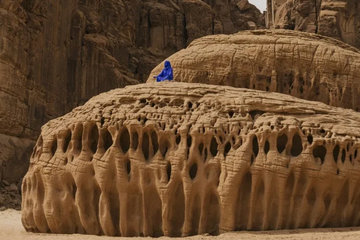
Walk into the south western town of Bisha in Saudi Arabia’s Asir province and the first thing you’ll notice is the presence of hundreds of thousands of date palm trees. Tall and majestic, these trees line the entire region, providing its aesthetic character and supporting its local economy.
Bisha has always been known for its fertile soil and valleys, and is home to not only date palms but other crops as well such as lemon trees and vineyards. That is why the Saudi government is focusing its efforts on rehabilitating Bisha’s agricultural offerings, working with the country’s top specialists to assure the safety and growth of its prized palms, and doing so using natural methods.
According to Saudi Gazette, Salem Al-Qarni, the director of the Ministry of Environment, Agriculture, and Water, stated that produce from the area is free from all pesticides and is organic. He explained that all farmers are taking the necessary precautions needed to allow for optimal harvest and diversity.
With regards to irrigation, farmers in Bisha are relying on rainwater that flows down the western and southern ranges across nearby mountains. To further facilitate water supply to the region, the ministry has constructed four major dams to collect rainwater.
In addition, the governorate of Bisha is focusing its efforts on not only developing honey and date production, but also its exportation across the globe as well.

Saudi Arabia boasts around 300 types of productive date palms that cover more than 150,000 hectares of land. Today, the Kingdom is home to an estimated 25 million date palm trees, making it one of the top global producers of dates in the world. The National reports that the world’s annual date harvest is estimated at more than 6 million tons and Saudi Arabia produces over 1.1 million tons of this total amount.
In addition, the date palm is not only a major crop of Saudi Arabia’s agricultural sector, it is an important part of its culture and heritage, so much so that it features on the country’s coat of arms.

















